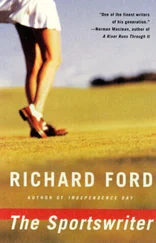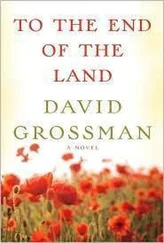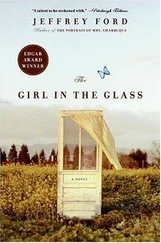This you need to save yourself from, or else the slide off the transom of life’s pleasure boat becomes irresistible and probably a good idea.

Stopped at the red light at Franklin and Pleasant Valley, my Suburban interior musty-damp and my feet warming with the defroster on high, the outside day has turned gloomy. Wind gusts against the hanging traffic light, making it yaw and twist and sway. Rain sheets the street. My car thermometer says the outside temp’s dropped to thirty-six, and lights have prickled on inside houses. Haddamites are getting indoors, holding hats to heads. Pilgrims in the Square are packing it in. It’s 1:00 p.m.
Something to eat and somewhere to piss are now high priorities, and I turn down Pleasant Valley toward Haddam Doctors Hospital, which has become my best-choice solo-luncheon venue since I moved away — in spite of its being the sad setting of my son’s final hours so long ago. It’s odd, I’ll admit, to eat lunch in a hospital. But it’s no stranger than paying your light bill at the Grand Union, or buying your new septic tank from the burial-vault dealer. Form needn’t always follow function. Plus, it’s not strange at all if you can get a decent meal in the process.
Decades ago, when I arrived in Haddam, you could grab a first-rate cheese steak in a little chrome and glass, plastic-booth diner lined with framed sports glossies and presided over by muttering old townies who wouldn’t speak to you because you were an outsider. And there was still a below-street-level, red-walled Italian joint serving manicotti and fresh bluefish, where they’d let you read your paper, fill you up, then get you out for cheap. Cops ate there, as did seminary profs, ancient librarians and the storied old HHS baseball coach who’d had a cup of coffee with the Red Sox once, and who’d sneak over in his blue-and-white uniform for a double vodka and a smoke before afternoon practice.
I loved it here then. The town had the ambling, impersonal, middling pleasantness of an old commercial traveler in no real hurry to get anywhere. All of which has gone. Now either you’re forced into mega-expensive “dining” or to standing in a line behind hostile moms in designer sweats pushing strollers into the Garden of Eatin’ Health Depot and who’re fidgeting over whether the Roman ceviche contains fish on the endangered list or if the coffee’s from a country on the Global Oppression Hot 100. By the time you get your food, you’re pretty much ready to start a fistfight — plus, you’re not hungry anymore.
At Haddam Doctors, by contrast, strangers are always welcome, parking’s easy in the visitors lot and it’s cafeteria-style, so no waiting. There’s no soul-less plastic ware. Everything’s spotless, tables cleaned antibacterially in record time. The long apple-green dining hall has an attractive commissary busy-ness bespeaking serious people with serious things in mind. And the food’s cooked and served by big, smiling, no-nonsense, pillowy black women in pink rayon dresses, who can make a meat loaf so it’s better cold than hot, and who always slip a little ham bone into the limas so you get back to your car with a feeling you’ve just had a human, not an institutional, experience. The cooks’ husbands all eat there — always the sure sign.
At lunch, you often share your table with some elderly gentleman with a wife in for tests, or a worried young couple whose child’s there for back straightening, or just some ordinary citizen like me grabbing a plate lunch before hitting it again. Restrained but understanding smiles are all that’s ever shared. (“We’ve all got our woes, why blab ’em?”) Nobody opens up or vents (you might complain to some poor soul worse off than you). White-smocked M.D.’s and crisp-capped nurses sit together by the windows, chatting while patient families eye them hopefully, wondering if he’ s the one and if they could interrupt for just one question about Grampa Basil’s EKG. Only they don’t. Stately decorum reigns. Occasionally, there’s an outburst of strange laughter, followed by a few Turkish words from the blue-trousered floor orderlies that break through the tinkle and plink of eating and surviving. Otherwise, all is as you’d want it. (Oddly, there’s no such positive ambience at Mayo — only an earth-tone, ergonomically-designed food court where patients stare wanly at other patients and pick at their green Jell-O.)
Plus, in Haddam Doctors, if anyone gets his Swiss steak down the wrong pipe or swallows an ice cube or suffers a grand mal, there’s plenty of help — Heimlich masters, wall-mounted defibrillators and Thorazine injections in all the nurses’ pockets. Beginning with when Ralph was a patient and his mother and I lived in the hospital days and nights, the most untoward thing I’ve witnessed was a streaker, a banker I knew who’d suffered reversals in the S&L crisis and ended up in the psycho ward, from which he made a brief but spectacular break (eventually, he got on at another bank).
However, when I wheel in toward Visitor Lot A, just after one, I see that something not at all regular’s afoot at the hospital. The big, usually glassed-in front windows of the cafeteria — inside which the doctors and nurses usually sit — are at this moment being ply-boarded over, with yellow crime-scene tape stretched across. Several uniformed Haddam police and detectives wearing badges on cords around their necks are standing out in the sorry weather, writing notes on pads, taking pictures and generally reconnoitering the scene. Glass from the empty windows is strewn out on the damp grass, and tan wall bricks and aluminum splinters and cottony insulation have been spewed as far as the visitors lot. Police and fire department vehicles with flashers flashing are nosed at all angles around the doctors parking lot and the ER entrance, along with two panel trucks from network affiliates. A man and a woman with ATF stenciled on the backs of their windbreakers are conferring with a large man in a fireman’s white hard hat and fireman’s coat. Yellow-slickered police are carefully outlining bits of debris with spray paint, while others use surgical gloves and what look like forceps to tweeze evidence into plastic bags they drop into larger black garbage bags that other cops are holding.
Up the four storeys of the hospital, faces are at all the windows, peering down. Two policemen in black commando outfits and holding automatic weapons stand at the lip of the roof like prison guards, watching the proceedings below.
What’s happened here, I don’t know. It can’t be good. That I do know.
Suddenly, a clack-clack on my passenger-side window scares me out of my pants. A round, inquisitive woman’s face, with a blue plastic-covered cop hat pulled down to her eyebrows, hangs outside the glass, staring in at me. An oversized black flashlight barrel shows above the window frame, its hard metal rim touching the glass, its beam shining over my head. The face’s mouth moves, says something I can’t make out, then a hand with pudgy fingers makes a little circular roll-’er-down motion, which I instantly perform from my side, letting in a gust of cold.
“Hi,” the woman says from outside. She smiles so as not to seem officially menacing. “How’re we doing, sir?” Her question intends that I need to be doing fine and be eager to say so. Rain mist has dampened her shiny black hat bill and made her cheeks shiny.
“I’m great,” I say. “What’s happened here?”
“Can you state your business here for me today, sir?” She blinks. She’s a thick, pie-faced woman who looks forty but is probably twenty-five. Her teeth are small and white, and her lips thin and unhabituated to smiling except in official ways. She’s undoubtedly been a law enforcement major somewhere and had plenty of practice looking in car windows, though her aspect isn’t alarming, only definite. I’m not doing anything illegal — seeking lunch. Though also wanting pretty seriously to take a leak.
Читать дальше













